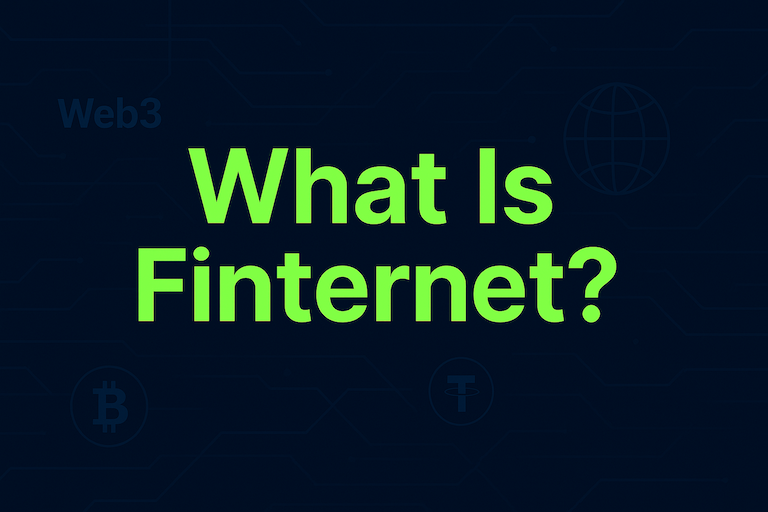What is Stock Tokenization?
Jun 12, 2025
Stock tokenization is an innovative concept that combines traditional financial assets with blockchain technology. It involves representing shares of a company as digital tokens on a blockchain, making ownership more accessible, transparent, and efficient. This article explains what stock tokenization is, how it works, its benefits, use cases, and important considerations for those interested in exploring this emerging field.
Definition
Stock tokenization refers to the process of converting shares of a company into digital tokens that exist on a blockchain. Each token represents a fraction or whole share of the underlying stock. These tokens can be traded on digital platforms and are designed to reflect the value and rights associated with traditional equity ownership.
Unlike regular stocks traded on traditional exchanges, tokenized stocks are often available 24/7 and can be purchased in smaller units, making investing more inclusive. This concept falls under the broader umbrella of asset tokenization, which includes real estate, commodities, and other financial instruments.
How It Works
The process of stock tokenization involves several key steps:
Asset Identification: A specific stock or group of stocks is selected for tokenization.
Legal Structuring: The issuing entity ensures compliance with relevant securities laws by creating legal frameworks that support digital ownership.
Token Creation: Using smart contracts (self-executing code on a blockchain), digital tokens are minted to represent the underlying shares.
Custody and Backing: The actual shares are held by a regulated custodian to back each token one-to-one.
Trading Platform Integration: The tokens are listed on compliant trading platforms where users can buy, sell, or transfer them.
These steps ensure that each token accurately reflects ownership rights and value tied to the original stock.
Types of Stock Tokenization
There are different approaches to implementing stock tokenization:
Fully-Backed Tokens: Each token is backed 1:1 by an actual share held in custody.
Synthetic Tokens: These represent the price movement of a stock without direct ownership; they are usually backed by derivatives or collateral mechanisms.
Fractional Ownership Tokens: Allow users to own small fractions of high-value stocks (e.g., owning 0.01 share of a $3,000 stock).
Each type serves different purposes depending on regulatory frameworks and user needs.
Key Features / Benefits
Stock tokenization offers several compelling advantages:
Accessibility: Investors can purchase fractional shares with lower capital requirements.
24/7 Trading: Unlike traditional markets with limited hours, tokenized stocks can be traded at any time.
Global Reach: Blockchain enables cross-border transactions without reliance on centralized intermediaries.
Transparency: Transactions are recorded on an immutable ledger, increasing trust and auditability.
Efficiency: Automated smart contracts reduce settlement times and administrative costs.
These benefits make stock tokenization an attractive option for both issuers and investors seeking modern alternatives to traditional finance.
Use Cases / Applications
Stock tokenization is already finding practical applications across various sectors:
Retail Investment Platforms: Offering fractionalized blue-chip stocks to users globally.
Employee Stock Programs: Companies issuing digital equity tokens as part of compensation packages.
Private Equity Markets: Tokenizing shares in startups or private companies for easier secondary trading.
Cross-Border Investing: Allowing international investors access to foreign equities without currency conversion hassles or local brokerage accounts.
These examples show how stock tokenization bridges gaps between traditional finance and decentralized technologies.
Getting Started / Steps
If you're curious about exploring stock tokenization as a concept or educational interest area, here’s how you might begin:
Understand Blockchain Basics:
Learn about public blockchains like Ethereum that support smart contracts.
Explore Digital Wallets:
Get familiar with wallets used to store digital assets securely (e.g., hot wallets vs cold storage).
Research Regulatory Guidelines:
Understand how different jurisdictions treat security tokens versus utility tokens.
Use Reputable Platforms for Exploration:
Ensure any platform used for educational purposes follows compliance standards such as licensing and custody regulations.
This foundational knowledge will help you better understand how digital finance ecosystems operate.
Security Considerations
While stock tokenization offers many advantages, it also comes with risks that should be considered:
Regulatory Uncertainty:
Laws around security tokens vary widely between countries; always check local regulations before engaging in any activity.
Custodial Risk:
If the real shares backing the tokens are not properly held or insured by custodians, there could be legal complications regarding ownership rights.
Smart Contract Vulnerabilities:
Bugs in smart contract code could lead to loss or misuse of assets if not properly audited.
Platform Reliability:
Ensure that any platform involved has robust security measures like two-factor authentication (2FA), encryption protocols, and transparent governance.
Being aware of these factors helps mitigate potential risks associated with this emerging technology.
Conclusion
Stock tokenization represents a powerful convergence between traditional finance and blockchain innovation. By turning real-world equities into digital assets, it opens doors to greater accessibility, efficiency, and transparency in investing. While still evolving within legal frameworks worldwide, its potential impact is significant—particularly for democratizing access to global financial markets.
Now that you have a basic understanding of what stock tokenization is and how it works, you can begin exploring its role in shaping the future of finance. Always prioritize learning through secure and compliant platforms that uphold strong regulatory standards and offer transparent operations as you navigate this exciting space.


